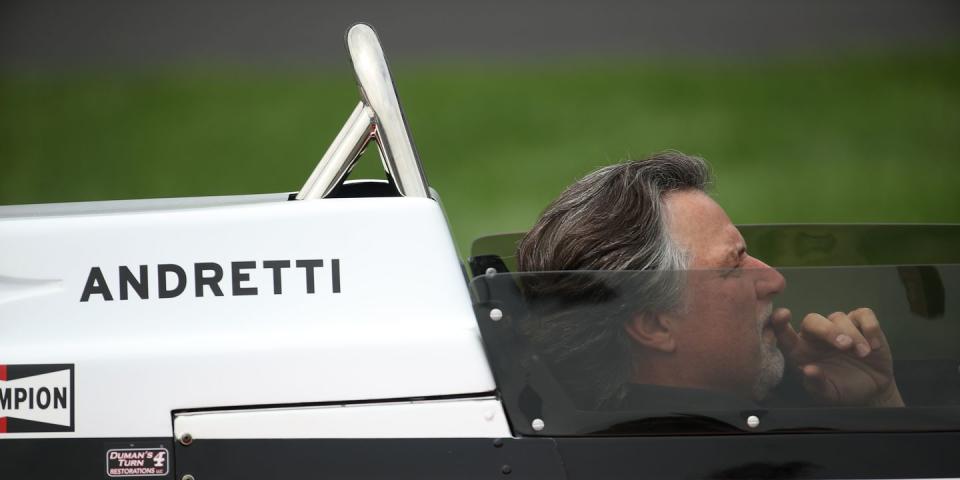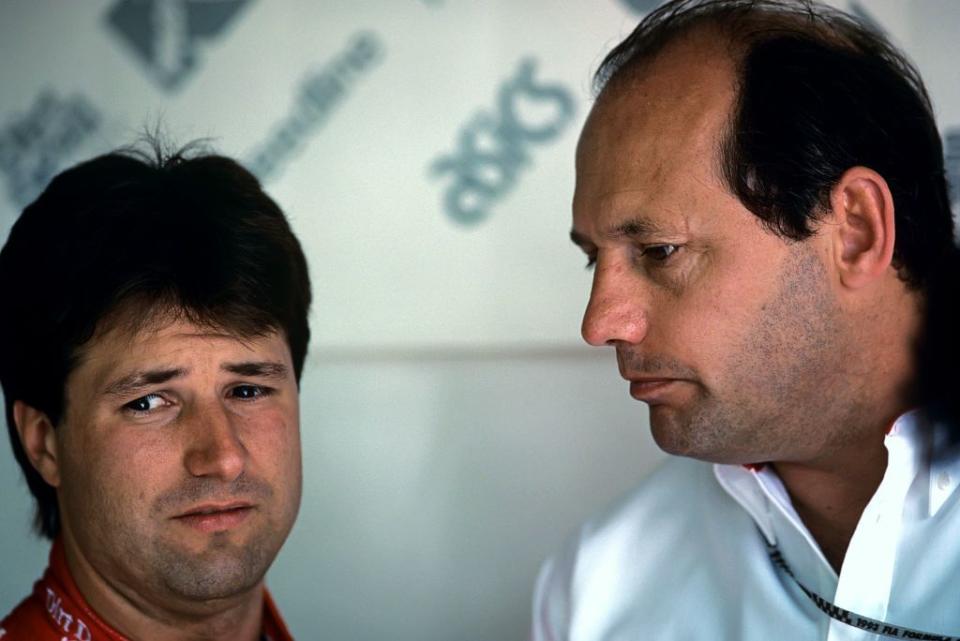Why Michael Andretti May Be Searching for F1 Redemption

In 1993, Michael Andretti left Indy car racing to drive in Formula 1 with McLaren, with many judging his single season in the series falling well short of expectations.
Andretti served as second driver behind three-time world champion Ayrton Senna, who he later described as his only ally at McLaren.
Andretti’s bid to return to F1 may offer some redemption to the now-team owner from his failures in the series as a driver.
It’s a really big year for Formula 1 fans in the United States, right?
There’ll be a giant party of an F1 race under the lights of Las Vegas, following the smashing debut of the Miami Grand Prix last season, making for three U.S. grands prix. Florida-native Logan Sargeant, the 22-year-old former FIA world karting champion and Formula 2 rookie of the year, joins the struggling but ever-optimistic Williams team as second driver. And team owner Michael Andretti, now in partnership with GM’s Cadillac division, is hustling harder than ever to acquire ownership of an F1 team.
Amidst this fanfare and excitement, it’s worth noting that 2023 also marks 30 years since the season old timers consider the last really really big year for F1 fans in the United States: The year driver Michael Andretti—fast, experienced, and at his athletic peak—went off to race for one of the best F1 teams of the early 1990s.
That did not turn out so well. Conventional racing wisdom says Andretti’s season at McLaren was a bust, and 30 years later it’s hard to spin it any other way. The standard take also suggests that failure rested almost entirely on Andretti’s shoulders—maybe, even, that he was simply not good enough to cut it. In retrospect, it’s clear there was more than enough blame to spread around. The positive spin would say Andretti’s timing was simply horrible.
It was September 1992, during the Italian Grand Prix weekend at Monza, when McLaren announced that Andretti would join three-time world champion Ayrton Senna for 1993. Andretti was fresh off a series-high five wins in the CART PPG World Series, and one of the most dominant drives ever in the Indianapolis 500 (which, unfortunately for him, ended with a failed fuel pump after leading 160 laps and lapping the field to third place). Finally, long suffering F1 fans in the States had something to be excited about. For the first time since the late 1970s, when Andretti’s father Mario raced and won for Lotus, there was American-bred talent driving for a team that was capable of winning F1 races.
Unfortunately, the ’93 season began inauspiciously for McLaren, more so for Andretti, and it mostly got worse. Longtime engine supplier Honda left F1 that year, and the team was forced to use Ford-Cosworth customer engines. The car was delayed, and finally ready with only enough time for Andretti to complete two short days of preseason testing. Maybe worse, the FIA instituted new rules for race weekends, limiting drivers to 23 laps in free practice and 12 in qualifying—at tracks that by and large Andretti had never seen.

At the season-opening in the South African Grand Prix at Kyalami in April, Andretti qualified ninth, seven spots behind teammate Senna. His car did not get off the grid for the formation laps thanks to a malfunctioning clutch. He DNF’d the first four races—sometimes his doing, sometimes the car’s—and seven of his 13 starts. The weight he’d borne being Mario’s son in the States was like a hydraulic press in Europe. He didn’t score points until the French Grand Prix in July and didn’t reach the podium until Monza, with three races to go. It was there, nearly one year to the day after McLaren announced Andretti’s signing, that team boss Ron Dennis said he and Andretti had agreed to part ways. Test driver Mika Hakkinen, much less expensive than Andretti, would finish the season in the second McLaren.
The positive spin on Andretti’s brief foray into Formula 1? He scored points in half of the six races he actually finished, and on several occasions qualified within a whisker of Senna, at tracks where Andretti had run a relative handful of laps.
The most frequently cited factor in Andretti’s failure at McLaren, then and now, is his unwillingness to move from his home in eastern Pennsylvania and set up a base near McLaren in the UK. Instead, he chose to commute back and forth across the Atlantic. Then, as now, Andretti called the wouldn’t-relocate hypothesis “absolute b---s----.”
“People who said that have no clue, or have some problem with me and didn’t want me to do well,” he told Autoweek years later, shortly before he retired as a driver. “Maybe I would now because my kids are older, but not living there had nothing to do with my performance.”
Certainly, he missed in-season tests that allowed his eventual replacement, Hakkinen, to establish rapport with the team? Not according to Michael.

 Yahoo Autos
Yahoo Autos 